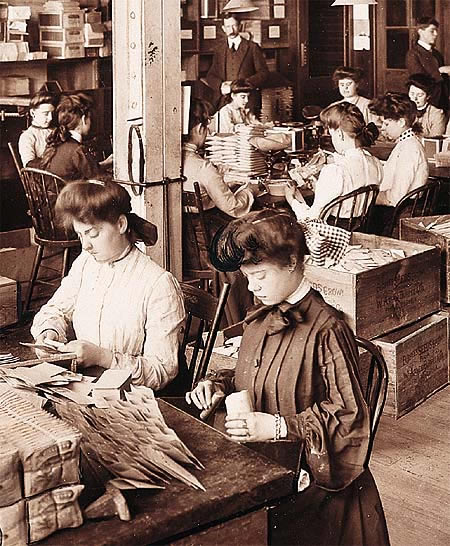
The onset of spring for many people is marked by the delivery of a catalogue. This categorized book of seeds symbolizes the beginning of a new planting season as eager gardeners pour over the bright and vibrant colors of flowers and vegetables. This mail-order seeds catalogue is none other than that of Burpee Seeds, one of the most famous seed suppliers in the world.
“Burpee is a magical name, even overseas,” said George Ball Jr., president of the W. Atlee Burpee Seeds & Co. today. “The company has really grown up with America. What Sears taught us about living, Burpee taught us about growing.”
Many avid gardeners do not want to waste any time starting their spring gardens. Burpee Seeds customer Nancy Schneider is among those who want to start planting as soon as possible. Schneider, 61, and a friend drove over 90 minutes to a W. Atlee Burpee Seeds & Co. store during the midwinter of 1999 to stock up on seeds for her spring gardens. Schneider is a dedicated gardener who starts her planting early in the winter months by growing the flowers in her basement and moving them up to sunnier places in her home as they get bigger. Since many gardeners get spring fever during the onset of winter and want to begin planning their spring gardens, Burpee capitalizes on this idea by sending out his catalogue during the winter months. These cold wintry months mark the beginning of Burpee Seeds’ busiest time of year.
As one of the greatest flower and vegetable seed companies, Burpee Seeds revolutionized the horticultural industry through the determined efforts of an 18-year-old man named Washington Atlee Burpee. Fascinated with poultry-breeding experimentation, Burpee turned breeding animals and eventually seeds into his life’s work by creating one of the best known mail-order seed companies in the United States during the 19th century.
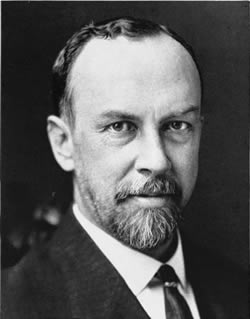
It all started in the year of 1876 when the great Philadelphia Centennial Exposition opened. America’s attitude at the time soared with the idea of individual achievement and prosperity due to westward expansion and the industrial revolution. Burpee, 18 at the time, attended the Exposition and was awestruck by the revolutionary mechanical and industrial exhibits on display. His interest in breeding and genetics catapulted him into action after witnessing such remarkable advancements at the Exposition.
W. Atlee Burpee nurtured his hobby, beginning experiments with livestock, dogs, and plants. The science of genetics fascinated him in his early teen years and he began corresponding with breeders from England to exchange information about the best breeding techniques. However, young Burpee put his dream on hold to attempt to fulfill his father’s wish by attending the University of Pennsylvania Medical School. Yet Burpee disliked learning medical practices so much that he dropped out of school, making his father angry. Conversely, his mother was more relenting and loaned her son $1,000 so he could establish a poultry breeding business, and thus the W. Atlee Burpee Company was created in Philadelphia in 1878.
Burpee’s business was fairly successful in the beginning years of operation. Yet he quickly realized he needed to diversify his products in order to solve his two major problems. First, he needed to sell a product that would create repeat business every year and second, he needed this product to be able to handle shipping well. Burpee decided to breed dogs (especially an outstanding strain of Border Collies), goats, hogs, calves, and sheep. The addition of seeds and plants to the W. Atlee Burpee Company came in response to homesick European immigrant farmers, who praised Burpee for his magnificent strains of farm animals, but wrote to him for help with their poor germinating seeds. Furthermore, one particular strain of hog that Burpee was producing was quite fussy with its diet and only fared well on a certain type of feed. Burpee realized that the potential market for feed and seed would be easier and would cost less to ship than the animals. Moreover, he solved the immigrant farmer’s poor seed problem by deciding to include the selling of European-style strains of seeds into his new line of products.
By the 1880s, the W. Atlee Burpee Company was the fastest growing mail-order seed company in the United States, selling livestock and seed mainly to the Northeast and plain states from its Philadelphia headquarters. Burpee guaranteed satisfaction with his products for one year from date of purchase, or he would give back the money or replace them; this satisfaction guarantee is still in practice today. In addition, W. Atlee Burpee also made it a habit to tour Europe in search of the best seed breeders. He kept a field book of data and observations so he could implement these ideas into new products back in America. Burpee also employed the artistic skills of immigrant watercolorists from Germantown to illustrate his seed catalogues and attract more business. His constant obsession with improvement and innovation contributed immensely to his great success as he was always introducing a new line of product.
However, one major issue with the seeds Burpee imported from Europe created a huge problem for the W. Atlee Burpee Company. Since the United States is positioned considerably farther south than Europe, the disparities in temperature, light intensity, plant enemies, and growth duration produces varying results in plants due to different latitudes. This means that a vegetable or flower that produced extremely well in Amsterdam would not fare very well on a western farm in the United States. Burpee had to adapt the European seeds to the conditions of America through the process of hybridization and selective breeding to get the desired traits.
In 1888, Burpee bought a farm in Bucks County, PA near Doylestown called Fordhook Farm to create a world-famous plant development facility. Through successful experiments at Fordhook, the best European seeds were able to be enhanced and modified to American growing conditions, making Burpee the world’s largest seed company by the 1890s. Additionally, Burpee became a household name due to its large success and consequently because of the unprecedented reliability of the seeds, the company adopted the slogan “Burpee’s Seeds Grow.”
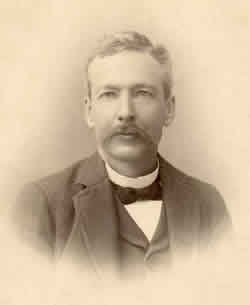
The majority of Burpee’s market at the time was mostly farmers, but flowers did make up a significant portion of the orders. Burpee travelled to the southern coast of California partially for further flower cultivation. In 1909, he established Floradale Farms at Lompoc, in Santa Barbara County, to expand the company’s seed experiments, especially with flowers. Later Burpee also set up breeding and growing farms all over the United States in Florida, Pennsylvania, Illinois, northern and southern California, and even in Costa Rica. At the same time that Burpee bought Floradale Farms, a cousin, Luther Burbank, was hard at work in Santa Rosa, CA. Burbank was a famed horticulturist like Burpee and gained world renown for introducing more than 800 new plant varieties including more than 200 variations of fruits, vegetables, nuts and grains, and many ornamental flowers. He also made revolutionary strides with potatoes, berries, and plums. Burpee went to visit Burbank and admired his cousin’s innovations and in turn, Burbank visited the East Coast to see Burpee’s successful experiments.
“Your Fordhook Trial Grounds were the best of all my eastern object lessons. I had no idea of their extent and value, not only to yourself, but to your customers, and eventually to everyone who cultivates the soil,” said Burbank in a subsequent letter to Burpee after his tour of one of W. Atlee Burpee Company’s facilities.
W. Atlee Burpee died in 1915 and his 22-year-old son, David, took over the family business. David Burpee continued the close friendship that his father had developed with Burbank and after Burbank’s death in 1926, the W. Atlee Burpee Company acquired the rights to Burbank’s experimental work and seeds. Some of Burbank’s best flowers and vegetables were added to the Burpee line as a result of the acquisition. This fusion of the two extraordinary horticulturists’ ideas increased the popularity of Burpee Seeds immensely.
Soon after David Burpee’s takeover of the W. Atlee Burpee Company, World War I created a shortage of seeds but also resulted in America rather than Europe becoming the world’s leading seed supplier. Burpee started to push the idea of hybridization in his products to generate better strains of seeds, which set his company out in front of other seed suppliers. In order to help with the war effort, David Burpee developed what he titled “War Gardens” that demonstrated how Americans could properly grow their own food during wartimes to help with the food shortages:
Food will win the war, we were told by Washington and I decided the best way I could help our country’s war effort was by showing people how to grow a good share of their food right in their own back yards. To dramatize this, I set up what we called War Gardens in a number of cities. The biggest attention-getter was the one in New York. It was in Union Square, directly opposite an imitation battleship bristling with wooden guns aimed at the tomatoes and cabbages. It was a huge success. I would guess that that garden alone must have started thousands of people gardening.
This approach was used to create a bigger consumer market for Burpee Seeds as it turned non-farming Americans into mini-farmers with vegetable gardens in their homes. This strategy was also later utilized again during World War II as Burpee pushed the idea of “victory gardens.” The gardens provided American consumers with a way to produce their own food when groceries were scarce at the stores during wartime. During post-war times, Americans were becoming more affluent and consequently had more time for leisurely activities. Many of the war and victory gardeners kept their gardens going long after the wars had ended as an enjoyable hobby. Moreover, horticulture had made another technological advancement in the 1940s with the shocking of chromosomes in flowers to make them burst open in new amazing forms. Snapdragons responded particularly well to this sort of treatment.
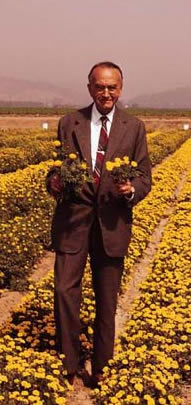
Burpee also employed the strategy of naming new products after well-known people to gain attention for his goods. For example, David Burpee named some of his flower line after people such as Mrs. Douglas MacArthur, Pearl Buck, Helen Hayes, Kate Smith, Osa Johnson, Patrice Munsel, and Mrs. Herbert Hoover. These names and others proved to be good attention-getters and helped advertise the W. Atlee Burpee Seeds Company.
David Burpee followed in his father’s footsteps by experimenting with breeding, but his true interest was in flowers, specifically the marigold. Burpee undertook numerous experiments to improve and perfect the growth and beauty of the marigold flowers. Burpee’s efforts paid off because by 1960, the marigold had become America’s favorite flower. This is partly due to Burpee keenly knowing how to create interest amongst the public about his new products. Burpee would advertise his new line at flower shows, but would not reveal the new products until enough curiosity was generated. Burpee credited this strategy of “teasing” the public to Bonaparte, saying, “Napoleon taught me how to give a flower show.” Burpee was particularly inspired by how Bonaparte had purposely created many delays in the shipment of Italian art treasures as war reparations to Paris so he could send out letters detailing the reason behind the delay to generate more interest and impatience among the French art lovers. He also admired Napoleon’s military strategy of striking with speed and mobility to get there first with victorious results. Burpee took this idea especially to heart for example by reducing project timelines from 3 years to 1 year and would hire extra workers to get the project done in time. This allowed the W. Atlee Burpee Seeds Company to achieve new innovations first in the breeding and horticulture industries.
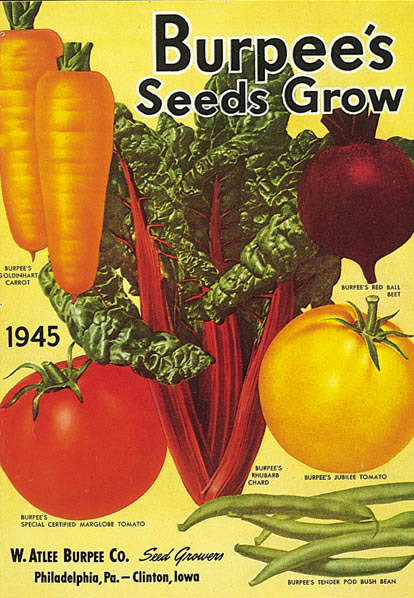
It was also during the 1950s that Burpee developed a close friendship with George Ball of George J. Ball, Inc. Founded in 1902, the Ball Company could be considered as the Burpee Seeds Company counterpart for they specialized in selling flower pots to florists, and later supplying seeds and plants to the food-processing industry and greenhouses. Ball’s business introduced many new popular flowers to the market and by the 1980s, the two seed companies had become so interdependent upon each other that a merger followed in 1991. Ball provided an array of new products while Burpee continued to open up an ever-growing consumer market. It was George Ball Jr. who went on to become president of the W. Atlee Burpee & Co., leading the merged business into the future. The W. Atlee Burpee & Co. is now headquartered in Warminster, PA.
George Ball Jr. knew the importance of keeping Burpee Seeds a family-run business and worked to keep some of the original products made by W. Atlee Burpee. However, Ball said in a 1994 article in the Sacramento Bee that “it’s not fair to compare the performance of the heirloom vegetables like iceberg lettuce - which Burpee developed in 1894 - against the new hybrids. The new plants are more flavorful, productive, bushier, disease resistant and develop a more regular plant habit.” He also explained that the market for seeds has changed over the years since customers today are not gardening out of necessity like they did in Burpee’s era. Of all the important aspects of the original Burpee Seeds Company, Ball makes sure the customers always receive what they had come to expect from Burpee: highest quality, a wide variety of products, constant innovation and improvement. Yet most importantly, Burpee Seeds guarantees the satisfaction that “Burpee Seeds Grow.”
Sources:
- Bartlett, Arthur. “David Burpee: Top U.S. seedseller is showman who glamorizes the crossbreeding of his flowers or vegetables.” Life 22 Apr. 1946: 53-58.
- Burpee, Washington A. The Seedsman’s Trial Grounds. Philadelphia: W. Atlee Burpee & Co., 1893.
- “Buyout could sow new life for Burpee.” Chicago Tribune 28 May. 1991, North Sports Final, BUSINESS: 1.
- “W. Atlee Burpee.” ExplorePAHistory.com. WITF, Inc. 2009. 9 Nov. 2009 <http://explorepahistory.com/hmarker.php?markerId=1044>.
- La Hay, Patricia.”In unseen nooks, spring is here \ basement or bedroom, in flats or pots, seeds sprout green.” Philadelphia Inquirer 28 Feb. 1999, CNORTH, NEIGHBORS MONTGOMERY: MC01.
- Leonard, Margery. “Seeds of the Season.” New York Magazine 2 Apr. 1979: 8.
- “Luther Burbank’s Story (Home and Gardens in Santa Rosa, California).” Parks and Recreation in Sonoma County, California. <http://www.parks.sonoma.net/burbstory.html>.
- Moore, Tina. “Business still blooming for company Burpee celebrates 125 years of providing seeds to farmers, gardeners.” Houston Chronicle 30 Sep. 2001, 2 STAR, A: 4.
- “READ IT & SEED IT.” St. Louis Post-Dispatch 29 Jan. 2000, FIVE STAR LIFT, LIFESTYLE: 20.
- “Seed. Feed. Succeed.” Popular Mechanics Apr. 1983: 147.
- “Seeds of Success - for more than a century, gardens have started with Burpee & Co.” Sacramento Bee 19 Mar. 1994, Metro Final, CAL LIFE: CL7.
- The Legacy of W. Atlee Burpee. Burpee.com. 2009. 9 Nov. 2009 <http://www.burpee.com/contentarticle.do?itemID=574>.

